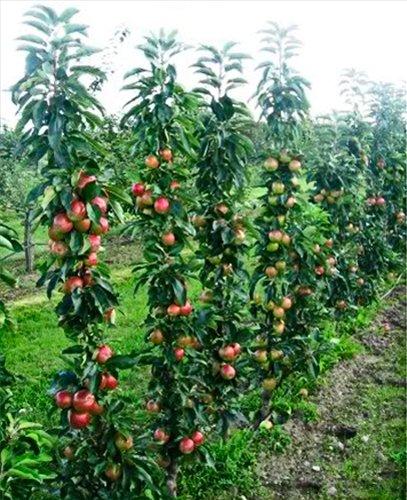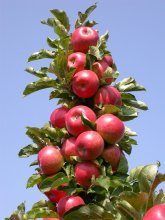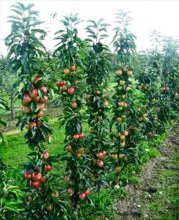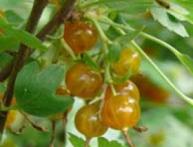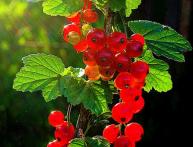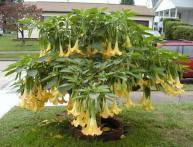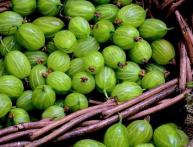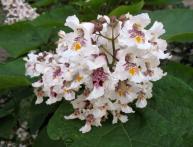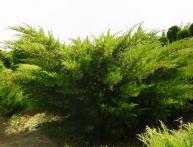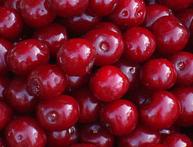Columnar apple varieties
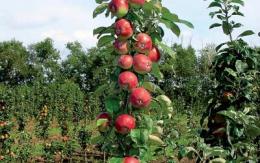
A good apple tree is a decoration for every garden. And for many reasons, gardeners give preference to completely different varieties. Not the least place among them is occupied by columnar apple trees, the varieties of which are regularly replenished due to their popularity and demand among gardeners.
Content:
- What are columnar apple trees?
- Landing Features
- Caring for columnar apple trees
- Varieties of columnar apple trees
What are columnar apple trees?
Columnar apple trees - miniature trees up to 2.5 m, crown up to 0.5 m, have high productivity. They do not have long side branches. They are distinguished from ordinary apple trees by their precociousness. Similar apple trees are divided into:
Landing Features
Although they are miniature, their root system is quite voluminous. Because of this, large holes are dug for them. For planting them, they choose a lowland so that there are snowdrifts there in winter that will protect them. The place where the grafting was done should rise above the ground. 5 kg of compost or rotted cow manure is poured into the holes. They also add 50 g of dolomite flour, 70 g of superphosphate, 60 g of potassium.
After placing the roots of the tree in the hole, it is watered. Then they pour in soil and deepen it around the trunk. Then water again, and at the end of watering, mulch the soil. You can just tie it to the trellisesplanted trees. They are planted in April or September. Apple trees are planted in rows at a distance of 100 cm, and a distance of 50 cm is made between trees.
When planting, you need to ensure that all varieties are divided into groups: summer varieties, autumn, winter, since they differ in terms of fertilizing, pruning, and harvesting.
Caring for columnar apple trees
At the end of May, the soil under the apple trees is fertilized with a solution of chicken droppings or manure. Insecticides are used to control pests, and fungicides are used to control diseases. In the first year after planting, they need to be watered 2 times a week. In winter, wrap the bottom of the trunk with plastic film to protect it from frost and rodents.
Tree feeding
In the spring it is necessary to add a urea solution. In the summer they are fed with phosphorus-potassium fertilizers.
Trimming
Usually they are hardly pruned. But if the apical bud is damaged, then there are 2-3 shoots on the trunk. Leave one to grow, cut off the rest when they grow to a length of 20 cm. Also remove long side branches when they are green and soft. The sections must be treated with varnish or drying oil.
Varieties of columnar apple trees
Summer varieties
Very often, the “President” variety is purchased for planting in the Moscow region. These are fairly compact trees; they take root well in small areas. They have yellowish-white, large, flattened, slightly ribbed apples up to 250 g, with juicy sweet and sour pulp and a slight waxy coating. They may have a soft pink color on the sunny side of the barrel.
The fruits last for 1 month. Semi-dwarf apple tree. Fruits periodically. Gives a harvest - 5-10 apples for the 2nd year of growth. Has high winter hardiness. Resistant to pests and diseases in the same way as standard varieties. Does not require intensive care. The height of the apple tree is up to 2 m.
“Medok” apples are yellow in color and have a very sweet taste, their weight is up to 250 g, and they ripen at the same time as “President”. The fruits can be stored for 1 month.From 1 tree you can collect 9-10 kg. The variety is very resistant to pests.
“Iksha” has yellowish fruits, roundish-flat with a striped-red blush, weighing up to 180 g. Apples are harvested when August ends. The taste is sweet and sour, has a saffron aroma. From the first year of planting, you can already harvest. The maximum harvest of apples from one tree is 6 kg.
Autumn varieties
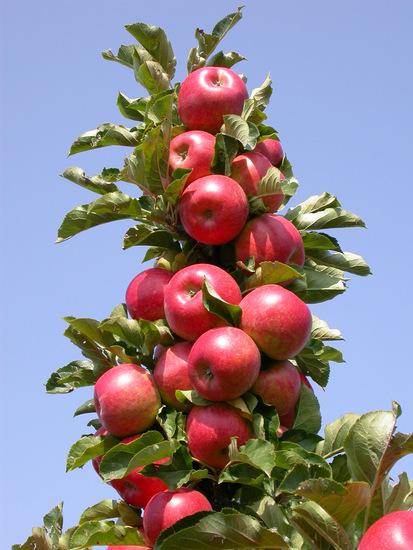
"Vasyugan" has large, hard, sweet and sour yellowish-green apples of a conical or elongated conical shape. Up to 7 kg of fruits are collected from one tree. The trees are classified as semi-dwarf; they grow up to 3 m in 8 years. Their crown is quite compact. The fruits lie not very long, 1 month.
After planting annual seedlings, the apple tree produces a harvest in the first year; in the 5th year it produces a maximum yield of up to 7 kg, and bears fruit for 16 years. It is recommended to plant seedlings at a distance of up to 40 cm, and the interval between rows should be 1 m.
The Malyukha variety is a dwarf apple tree up to 180 cm high. The tree loves nutritious soil and bright sun.
How they are planted: there is a distance of a meter between rows and approximately 70 cm between trees. In year 2 you can collect 2-3 kg of fruit. A maximum of 12 kg can be collected only after 5 years. The apples are light green, oblong in shape, sweet and sour, up to 120 g, they ripen in September and can be stored until January. The tree needs to be regularly fed with manure.
Winter varieties
annewinter variety "Victoria". Apples taste great and are easy to transport. They keep for a long time. They are distinguished from other trees by the fact that the trunk can bend towards the ground under the weight of the fruit. The apple tree produces a harvest already in 1 year after planting, and by the 4th year it reaches maximum fruiting.
It bears fruit for 15 years.It has increased resistance to scab, so you don’t have to carry out chemical treatment. Apples ripen in October. The fruits weigh up to 200 g and have a sweet and sour taste. Apples keep well until February.
Varieties that are winter-hardy in the same way as the ordinary Antonovka apple tree; they can withstand temperatures up to 40°C:
- Iksha
- Barguzin
- The president
- Peasant
And finally, a variety that is superior to Antonovka in its winter hardiness is Vasyugan; it can withstand temperatures down to -42°C, so in addition to the Moscow region, it can be planted in the Far Eastern and Ural regions.
The columnar apple tree is the optimal choice for older people who find it difficult to do heavy physical work.
Watch a video about varieties of columnar apple trees:
Interesting information about the vegetable garden

